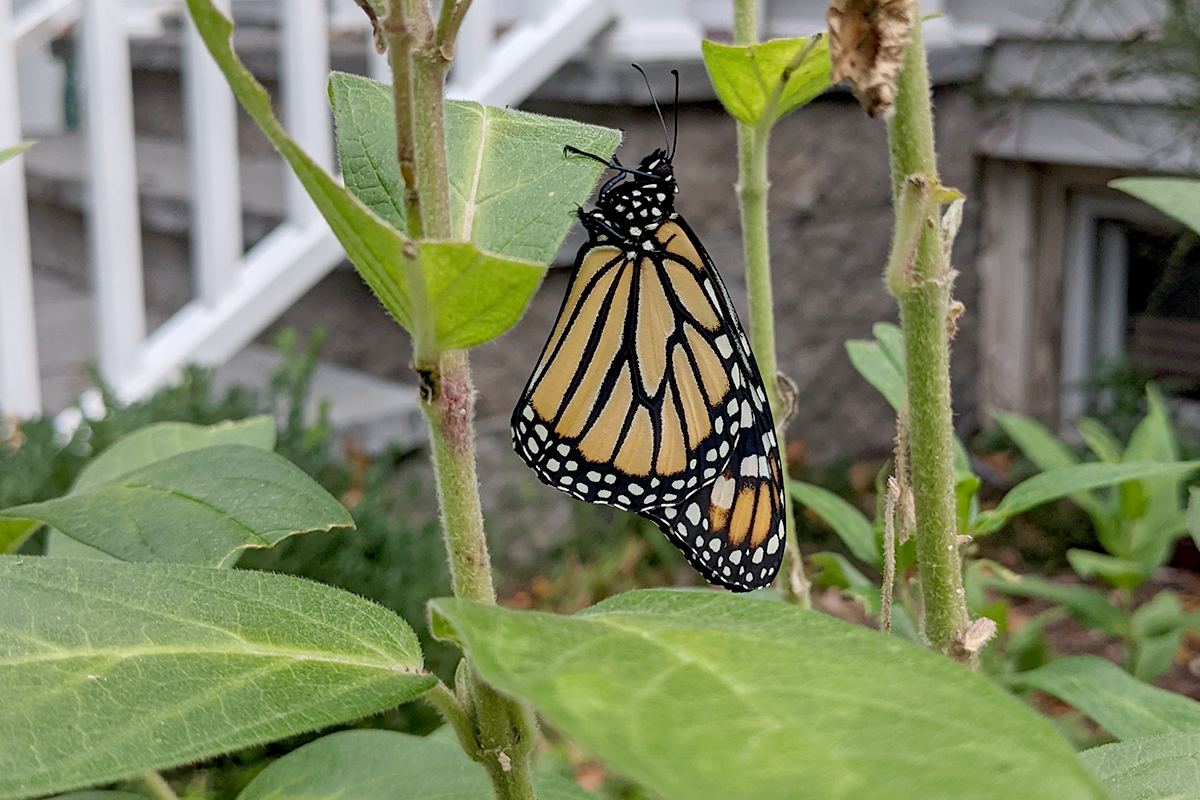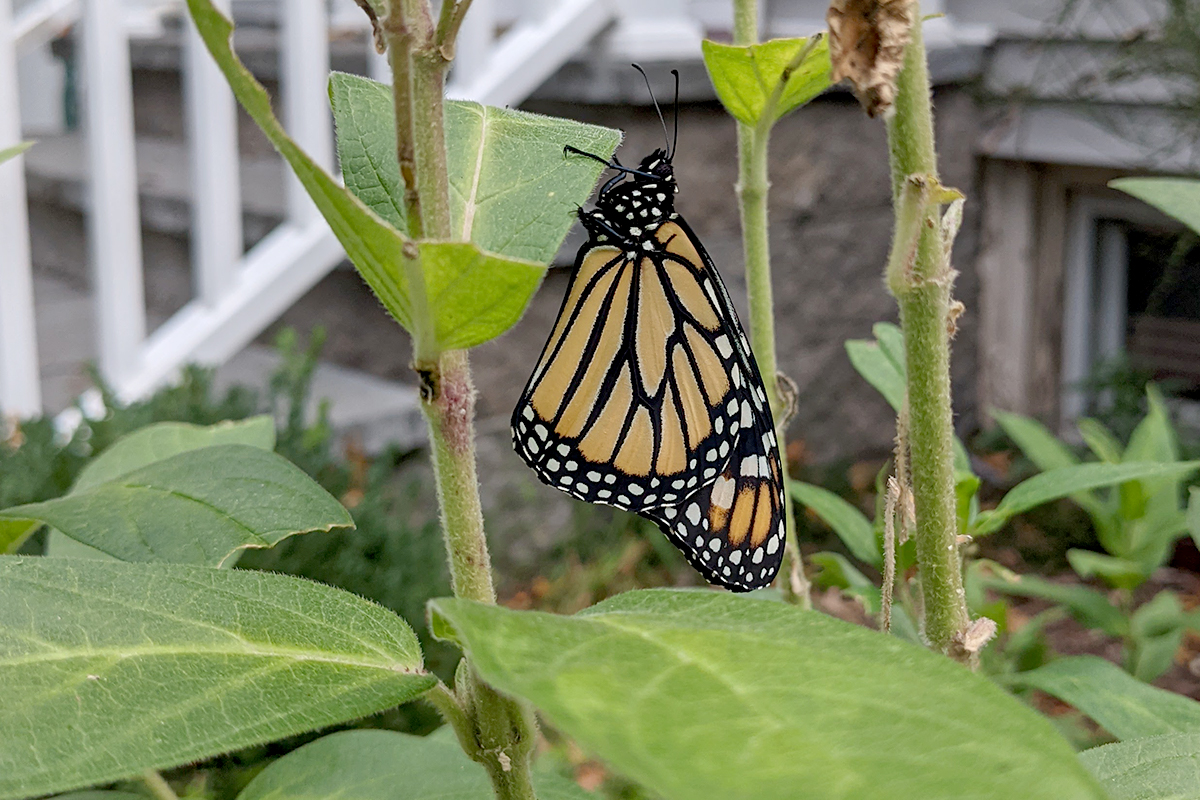


When nature aficionados pass through Downs Farm Preserve in Cutchogue and Custer Preserve in Southold, they will soon notice signs there promoting monarch waystations.
Waystations promote spring and summer breeding for monarch butterflies by providing milkweeds and nectar sources that are necessary for the species’ survival. The signs and waystation designations, which were approved by Southold at the regular Town Board meeting Nov. 6, aim to advance education about local wildlife preservation efforts and do so at no cost to residents.
“It’s important to know that this species needs support land,” Mr. Krupski said.
Monarch Watch, which facilitates the countrywide Monarch Waystation Program, was founded in 1992 with a goal of tagging monarchs and tracking their migration patterns. The organization launched the waystation program in 2005 when the number of butterflies seen at overwintering grounds in Mexico became noticeably smaller.
Monarch Watch director Kristen Baum said the loss of habitats and milkweeds is one of the biggest concerns for spring and summer butterfly breeding grounds. Advancements in pesticide usage on farmland where milkweeds would normally grow have decreased the amount of plants necessary for the species’ breeding.
“The nice thing about monarchs and the conservation needs of monarchs, is there’s something that everybody can do,” Ms. Baum said. “Even if you live in an apartment, you could have a potted plant on your doorstep with lots of good nectar plants.”
Community members, schools, libraries and other local stakeholders can establish waystations of their own by planting 10 or more milkweed plants— preferably of two or more species, which increases their chances of blooming and entices butterflies to stay in the garden longer. Species that are native to the Northeast include milkweed, swamp milkweed, buttery milkweed and poke milkweed.
Monarch Watch also offers a free milkweed program to facilitate creation of waystations by schools or educational nonprofits and at large-scale native habitats of more than two acres.
Habitat management is another key part of maintaining a waystation, Ms. Baum said, noting that it’s important for managers not to spray insecticides on their plants.
Nearly 50,000 monarch waystations have been registered in the United States through this program, according to Ms. Baum.
Monarch Watch awards a certificate to each waystation that joins its registry. Participating locations can also purchase a metal sign that identifies their monarch habitat as an “official Monarch Waystation.”
“It is an interesting thing that monarchs connect three countries — in terms of the long-distance migration from southern Canada to central Mexico for the eastern population,” Ms. Baum said. “But I think they’re a great connector of people of all ages and are just very engaging.”
24World Media does not take any responsibility of the information you see on this page. The content this page contains is from independent third-party content provider. If you have any concerns regarding the content, please free to write us here: contact@24worldmedia.com

Calendar of Events: Nov. 14, 2024

Southold to add monarch waystations at Downs Farm, Custer Preserve

Southold to add monarch way stations at Down Farm, Custer Preserve

Lynnfield votes on changes to zoning bylaws and funding for projects

Swampscott strives for cleaner beaches

Guatemala gets dental work from Lynn volunteers

Peabody McDonald’s raises money for fire victims

Council to vote on enhancing tenants’ rights

Lynnfield shoots and scores its way to Final 4

Three Sachems take it to the next level

LTTE: Veterans Day reflections on unity

Main Street becomes danger zone for drivers in Saugus